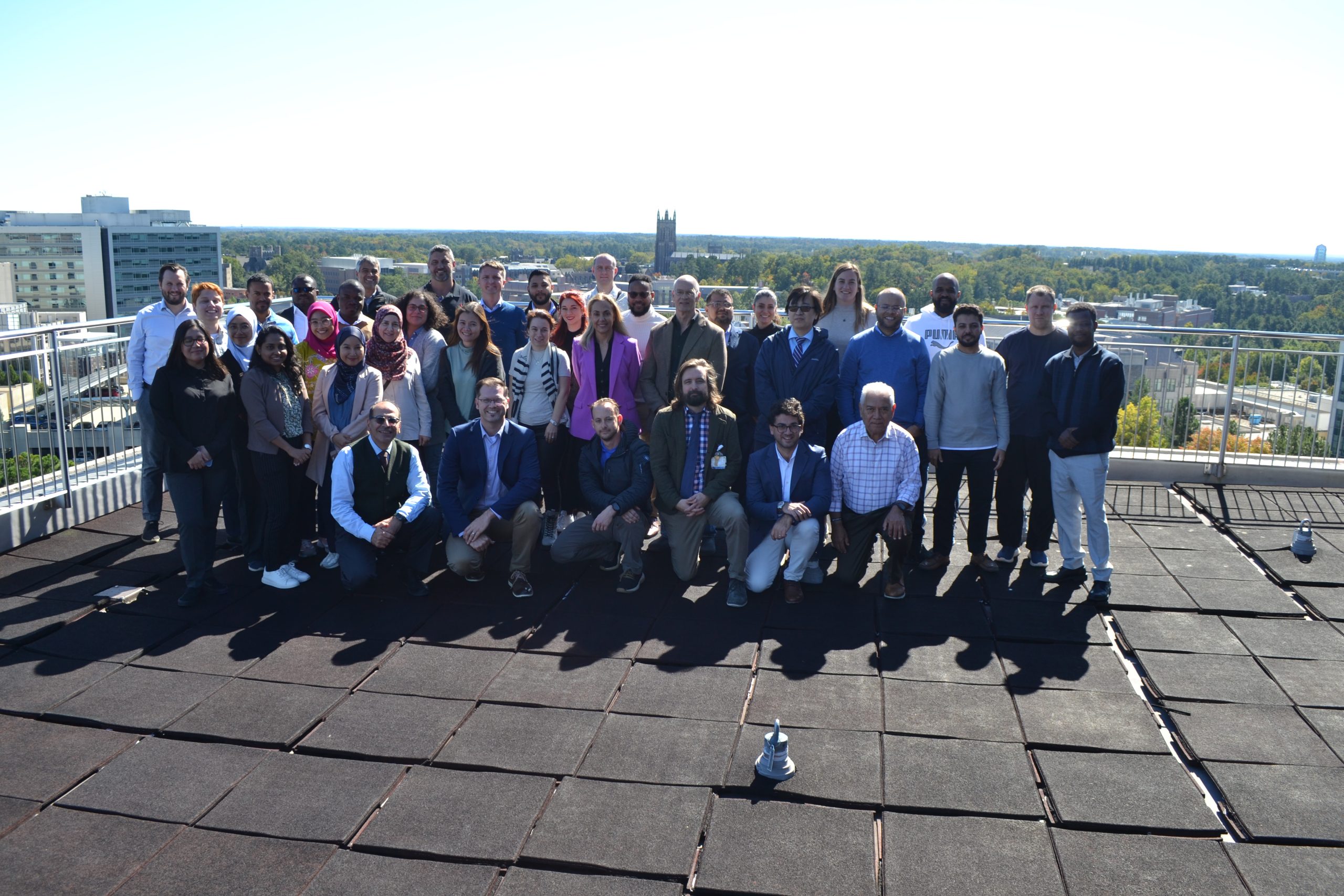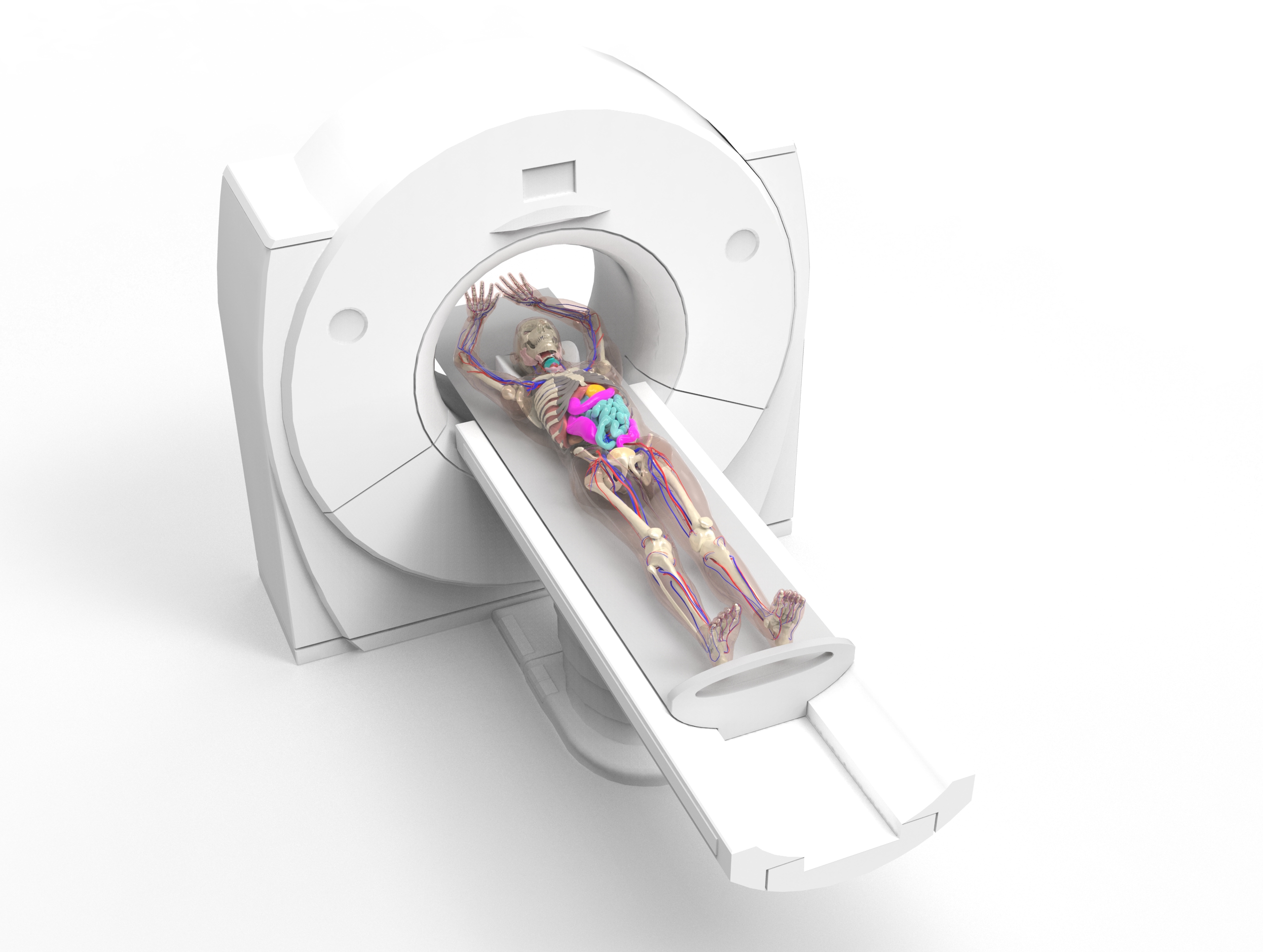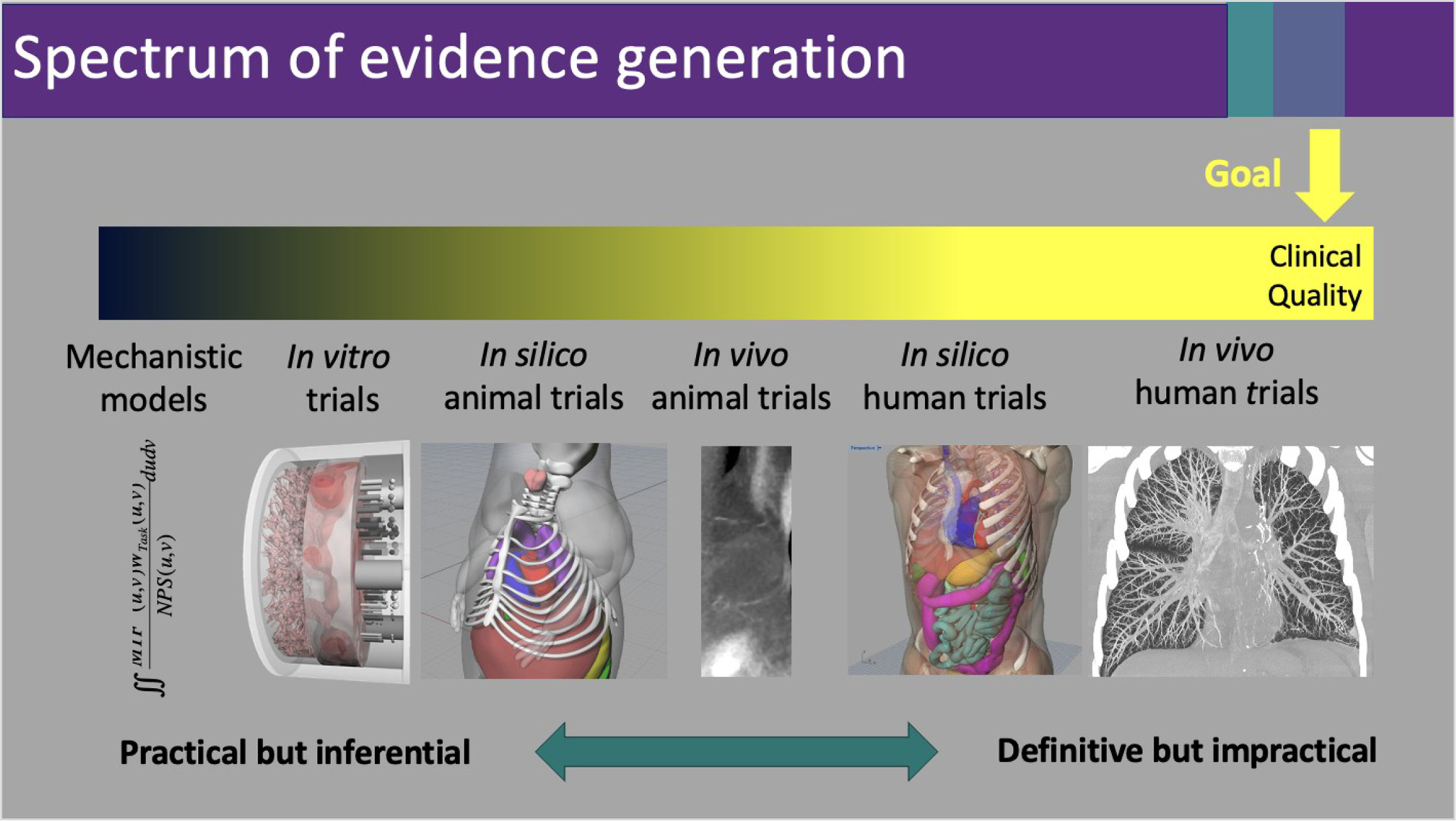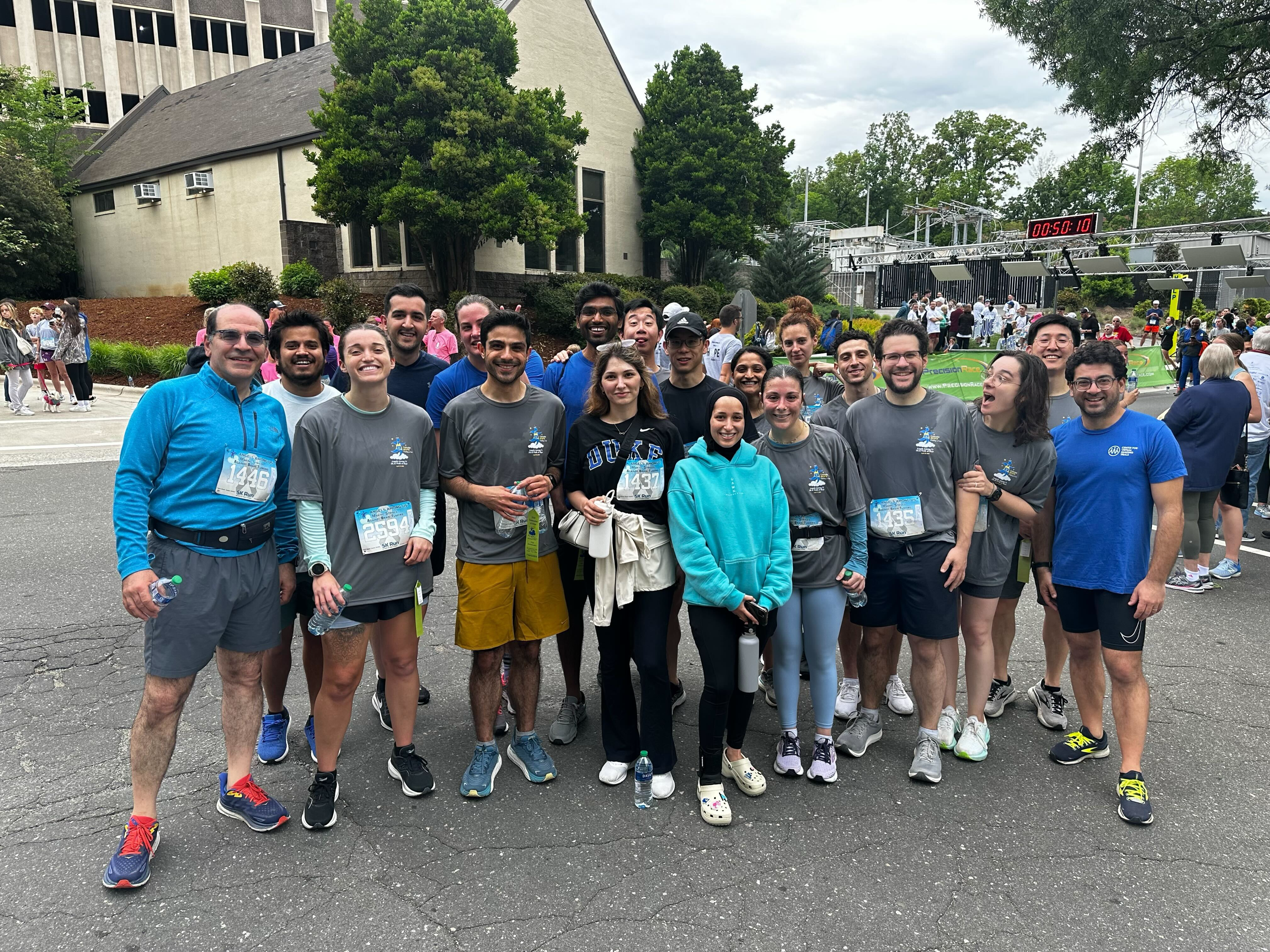News
Duke University hosts global IAEA CT Masterclass for medical physicists
Last week, Duke University welcomed medical physicists from around the world to participate in a unique training event, the Joint IAEA and Argonne National Laboratory Training Activity on CT Clinical Physics and Optimization. This masterclass, hosted by the Clinical Imaging Physics Group (CIPG) at Duke University, was designed to equip professionals with advanced insights and strategies in computed tomography (CT) physics. Through collaboration, hands-on learning, and shared expertise, participants gained valuable skills informed by Duke’s leading practices in CT clinical physics. A global initiative in CT Physics training This intensive program, organized by Dr. Ehsan Samei, Dr. Steve Bache of CIPG and Duke Radiologist Dr. Donald Frush, featured contributions from experts within Duke, providing an invaluable learning experience rooted in the latest advancements in CT clinical physics. Speakers from Duke included Dr. Francesco Ria, Dr. Justin Solomon, Dr. Steve Bache, and Dr. Jered Wells. They were joined by Duke radiologists and technologists, including Dr. Daniele Marin, Dr. Donald Frush, and Lior Molvin. Guest speakers from Siemens and GE offered industry perspectives, adding depth to the discussions on clinical applications and technology optimization. Organized under the support of the International Atomic Energy Agency (IAEA) and the Argonne National Laboratory, the masterclass represents a collaborative effort to elevate global standards in CT physics. Virginia Tsapaki from IAEA played a key role in making the event possible, underscoring the importance of international cooperation in advancing medical imaging practices. A Comprehensive Learning Experience The masterclass comprised a variety of sessions focused on optimizing CT clinical practice through evidence-based protocols and innovative methodologies. Attendees participated in lectures, discussions, and case studies, addressing key topics such as dose management, image quality, and best practices for CT protocols. As a highlight, the program concluded with a half-day workshop at the Duke Cancer Center, where participants put their new knowledge into practice in a clinical setting. Duke’s West Campus and iconic Duke Gardens, along with downtown Durham, provided participants with cultural enrichment and a taste of the university’s vibrant surroundings, enhancing the overall experience. A Collaborative Effort Behind the Scenes This event was made possible thanks to the dedicated efforts of the organizing committee, including Francisco Aguirre, LaTira Shaw, Dr. Liesbeth Vancoillie, Katherine Hand, and Katie Olivas. Their meticulous planning ensured a seamless and impactful program for participants. As the IAEA CT masterclass concludes, it leaves an enduring impact on the participants, who return to their home institutions equipped with fresh insights and strategies for advancing CT practices. Through this and future training events, Duke University and CVIT continue to contribute to the global exchange of knowledge in medical physics, setting the stage for improved patient care worldwide.
Call for Contributions: Survey on X-Ray Simulation Frameworks
We are conducting a survey to gather information on various x-ray simulation frameworks currently available in the field. This survey aims to create a comprehensive overview of these frameworks, which will be compiled into a review paper to benefit the x-ray imaging community. If you have developed an x-ray simulation framework, we would greatly appreciate your contribution. Please take a moment to fill out our survey by following this link: Survey X-ray Simulation Frameworks. If you know of any additional frameworks or individuals in this field who should be included, please let us know via cvit-inquire@duke.edu. We aim to make this overview as comprehensive as possible. Thank you for your support in advancing the knowledge and resources available in x-ray imaging!
The Rise of Virtual Imaging Trials
A recent article published in RSNA News explores how virtual imaging trials (VITs) are revolutionizing radiology, providing a faster, safer, and more cost-effective alternative to traditional imaging trials. Featuring insights from Dr. Ehsan Samei of Duke University’s Center for Virtual Imaging Trials and Dr. Predrag R. Bakic from Lund University, the article highlights the key benefits of VITs, including reduced trial costs, minimized risks, and enhanced precision in imaging research. Read the full article in RSNA News here.
September Social: Paperhand Puppet Show
For this year’s September Social, the lab came together in the peaceful setting of Chapel Hill’s forest to experience the Paperhand Puppet Project’s “Earth and Sky”. The performance brought to life a world where creatures of all kinds unite in a movement for collective liberation and survival. With themes of mutual respect, reciprocity, and healing, the show inspired us to imagine and work toward a shared, hopeful future. The evening was both memorable and thought-provoking, encouraging reflection on how we can foster unity. We capped off the event with a delightful picnic and relaxed gathering with lab members, making it a perfect evening to unwind and connect.
Center for Virtual Imaging Trials (CVIT) has been featured in Applied Radiology.
Our work on virtual imaging trials has been featured in Applied Radiology. The article, “Virtual Imaging Trials: The Next Big Thing?”, explores how in silico trials can revolutionize imaging system development and patient care. With contributions from experts like Dr. Ehsan Samei and Dr. Francesco Ria of Duke University’s CVIT, the feature highlights the growing role of computational medicine in advancing medical research and clinical practice. Read the full article to learn more about the future of radiology.
CVIT and CIPG at the AAPM Conference 2024
The Center for Virtual Imaging Trials (CVIT) and the Clinical Imaging Physics Group (CIPG) are excited to announce their participation in the upcoming American Association of Physicists in Medicine (AAPM) Conference 2024. This event brings together medical physics professionals from all over the United States to discuss the latest advancements and research. CVIT and CIPG researchers will present eight studies covering radiology and nuclear medicine. Several of our lab faculty members have been invited to present at the conference. Dr. Ehsan Abadi and Dr. Justin Solomon have both been invited to speak in a session on optimizing protocols and workflows for diagnostic quality. Dr. Joseph Lo is invited to speak on AI for Breast Image Interpretation. Additionally, Dr. Ehsan Samei, former AAPM president, will give three presentations during the conference, focusing on digital twins, virtual clinical trials, and the new CMS rule. Following presentations from CVIT and CIPG: Sunday Steve Mann: Evaluation of Reported Water Equivalent Thickness from Interventional Fluoroscopes As a Potential Surrogate for Patient Size Ehsan Samei: A Case for Medical Physics in Clinical Pathology Nicholas Felice: Automated Generation and Insertion of 3D Coronary Artery Plaques into Virtual Phantoms Jainam Valand: Truth-based Physics Informed Estimation of Material Composition in Spectral CT. Joshua Wilson: Residency Salaries Adjusted for a Cost-of-Living Indicator Njood Alsaihati: A Virtual Trial Study to Assess the Relative Value of Different Body Size Measurands to Inform the Needed Radiation Dose Tuesday Raj Panta: Accurate Iodine Quantification via Deep Silicon Photon-counting CT: Size, Dose, Concentration, and Organ Dependencies Ngara Bird: 2024 SIAM Conference on Imaging Science Joseph Lo: From Concept to Clinic in Two Years: An Academic-Industry Rollercoaster Ride Wednesday Ehsan Samei: Digital Twins and Virtual Clinical Trials Ehsan Abadi: Optimizing Clinical CT Imaging with Virtual Applications Justin Solomon: Indication-Based Image Quality Review Thursday Ehsan Samei: What Is the New CMS Rule? Joshua Wilson: Determination of Daily CT QC Hounsfield Unit Thresholds for Quantitative SPECT-CT Ngara Bird: Automated Segmentation and Noise Evaluation in Clinical Planar Whole Body Tc-99m Bone Scans
Lab participates in Angels Among Us 5K Run for brain cancer awareness
On April 27, the lab came together for the Angels Among Us 5K Run, supporting the fight against brain cancer. A big group of us took on the challenge, running through Duke’s beautiful West Campus and around the iconic chapel. The event was a fantastic opportunity for our team to get active for a cause we care about, and we are proud to have raised $800 in total. It was an inspiring day full of energy, teamwork, and community spirit as we joined many others to raise funds for critical brain cancer research.
CVIT presents 11 studies at 2024 SPIE Medical Imaging
A total of 11 cutting-edge scientific studies will be presented at the 2024 SPIE Medical Imaging conference by researchers from the Center of Virtual Imaging Trials (CVIT) and RAILabs. SPIE Medical Imaging conference, this year co-chaired by our TRD3 leader Dr. Joseph Lo, is scheduled to take place from February 18-22 in San Diego, CA. Experts and researchers from CVIT and RAILabs will unveil their contributions across diverse research areas and modalities solidifying the commitment of these institutions to advancing the field of medical imaging. The array of presentations will encompass topics ranging from the clinical evaluation of automated exposure control systems in radiography to breakthroughs in photon counting CT technology. Additionally, attendees can anticipate insights from virtual imaging trial studies and the optimization of contrast media administration, showcasing the multifaceted expertise of these institutions. Finally, noteworthy is the presence of plenary speaker Cynthia Rudin from the Interpretable Machine Learning Lab at Duke, who will share insights into interpretable deep learning in medical imaging. Following is the list of the studies from CVIT and RAILabs: Monday 02/19 Francesco Ria: Performance assessment of photon counting versus energy integrated CT: concordance of in vivo and phantom measurements Amar Kavuri: Quantitative accuracy of lung function measurement using parametric response mapping: A virtual imaging study Xuan Liu: A residual-attention multimodal fusion network (ResAMF-Net) for detection and classification of breast cancer Wednesday 02/21 Fakrul Islam Tushar: Virtual NLST: towards replicating national lung screening trial Mridul Bhattarai: A generic model of semiconductor-based photon-counting detectors for spectral CT Cindy McCabe: A comparative study on the utility and choice parameters of photon-counting CT for bone quantification Darin Clark: Multi-Channel Reconstruction (MCR) Toolkit v2.0: open-source Python-based tools for X-ray CT reconstruction Nicholas Felice: Enhanced CT simulation using realistic vascular flow dynamics Thursday 02/22 Saman Sotoudeh-Paima: Development and application of a virtual imaging trial framework for longitudinal quantification of emphysema in CT Cindy McCabe: Synthesizing heterogeneous lung lesions for virtual imaging trials David Kim: Random walk small intestine models for virtual patient populations Stay tuned on our social media for a wealth of scientific knowledge, collaborative discussions, and pioneering discoveries at the SPIE Medical Imaging conference. For more details and to join this exciting journey, visit the official SPIE Medical Imaging website: https://spie.org/conferences-and-exhibitions/medical-imaging.
Milestone Achieved: Mojtaba Zarei Earns Doctoral Degree
Dr. Mojtaba Zarei’s doctoral journey at Duke University was a captivating exploration of machine learning’s potential to revolutionize medical imaging, empowered by the innovative tool of virtual imaging trials. His research pursued two key objectives: optimizing scanner protocols for specific applications like cardiac and lung cancer screening, and developing AI models to enhance and harmonize image consistency. Additionally, he delved into the fascinating realm of material decomposition AI for spectral images and novel liver lesion detectability index. We asked Dr. Zarei to share some memories about his doctoral experience with us. Dr. Zarei, how the Center for Virtual Imaging Trials enhanced your Duke graduate student experience? Reflecting on my PhD experience, I am deeply grateful for the invaluable lessons I have gained. Participating in diverse group meetings, ranging from TRD2 with Dr. Abadi to TRD3 with Dr. Lo, honed my critical thinking skills and equipped me with valuable research development strategies. I mastered the art of managing research projects, navigating challenges with agility and adaptability, and independently taking ownership while seeking guidance when needed. Most importantly, I discovered the transformative power of collaboration, witnessing firsthand how diverse perspectives can synergistically create groundbreaking results. Additionally, I learned the crucial value of being a valuable and contributing team member. Your PhD path was strongly affected by the COVID-19 pandemic. How challenging was adapting to remote working and studying? Beyond the technical aspects, certain moments resonated deeply on a personal level. As an extrovert, adapting to the virtual interactions of joining Railabs during the early days of the COVID-19 pandemic presented a unique challenge. However, the subsequent return to in-person meetings and reconnecting with colleagues face-to-face was a truly special experience. While I did miss the casual camaraderie of lunches at the Railabs kitchen, the joy of reconnecting in person was truly profound. Graduate studies are not simple factual knowledge. How did the PhD experience impact you personally and professionally? Next to these technical skills, my PhD journey instilled in me the crucial value of perseverance. Countless moments of frustration, where results diverged from expectations, tested my resolve. However, I learned to remain committed, viewing setbacks as opportunities for learning and growth. This unwavering resilience is a valuable asset that I carry not only in research but in all aspects of my life. Can you tell us about some of your favorite moments? My PhD journey was woven with memorable moments that fostered growth and connection. My first-ever improv experience at Second City improv after my first RSNA, with Dr. Samei, Dr. Ria, and colleagues where performers hilariously targeted me, cemented the memory! Engaging with brilliant minds at conferences like RSNA, AAPM, and SPIE broadened my horizons, while reconnecting with former colleagues thriving in industry and academia sparked joy. Besides, the sunrise run with Dr. Samei at AAPM at DC, CVIT’s 5K run at “angle among us” and being “unofficial” member of the CVIT soccer team were unforgettable memories I have. And during all of this 4 yours of research, as an international student navigating a new country, Dr. Samei’s unwavering support was a constant anchor during challenging moments. The graduated neuron doll he gifted me right after my defense will always be a cherished reminder of these times!









